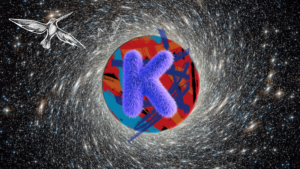Ketamine has a long and storied history and is primarily known for its use as an anesthetic used by medical practitioners. But now, researchers are discovering that ketamine could be the secret to unlocking a new treatment option for individuals suffering from major depression.
As the world’s leading cause of disability and a major contributor to suicide, depression is a common condition that affects a diverse range of individuals. And while many individuals with depression have found relief through prescription medications, therapeutic measures, and other methods, there is also a significant number of people that are still suffering.
Some studies show that more than 1/3 of patients treated for depression will eventually become treatment-resistant, meaning that their symptoms do not respond to traditional treatment options. Although there is still much to learn about treatment-resistant depression and depression in all other forms, ketamine is emerging as an exciting new option for reducing symptoms and even helping prevent suicides in the long term.
How can ketamine change the way depression is treated?
When you consider the current treatments available for depression, nearly all of them have one thing in common: it can take a considerable amount of time for a patient to experience positive results. Talk therapy, antidepressants, electroconvulsive therapy (ECT), and transcranial magnetic stimulation (TMS) may all be effective options for depression treatment; however, they can take weeks or even months to make a difference.
In contrast, ketamine can deliver rapid results, significantly reducing the severity of suicidality as well as other symptoms of depression. Additionally, ketamine therapy can also be highly helpful in treating patients that suffer from both depression and anxiety.
How does ketamine therapy work?
Like many new and exciting options for mental health treatment, ketamine is a topic that we are still working diligently to learn more about.
However, because ketamine seems to be able to provide an antidepressant effect via a new mechanism – one that is different from other treatment methods – it could be a valuable option for individuals who have been unable to find relief through other options.
Researchers believe that it is likely that ketamine works by binding to the brain’s NMDA receptors. The result is an increase in the amount of glutamate, a neurotransmitter that exists in the spaces between neurons. In turn, glutamate activates the AMPA receptor, which, when combined with the blockade of NMDA receptors, can release various molecules that support the communication of neurons. This process, which occurs along new pathways in the brain, is called synaptogenesis. Studies seem to show that synaptogenesis could play a significant role in shaping cognition, mood, and thought patterns.
Besides that, ketamine could also be an effective way to reduce the signals that are related to inflammation. For example, these signals have been connected to mood disorders, and by decreasing them, ketamine can possibly help facilitate better communication between certain parts of the brain.
Scientists are still studying how ketamine works, but it is becoming more clear that it likely contributes to symptom relief in several different ways, simultaneously.
What are the different types of ketamine?
Ketamine Therapy for depression utilizes two primary types of ketamine:
- Racemic ketamine is commonly given in the form of an infusion, delivered directly to the bloodstream. In many treatment centers, this type of treatment is called intravenous (IV) ketamine. It can also be administered via IM (intramuscular) infusions. This form of ketamine is a blend of two molecules, which are mirror images of each other: “S” ketamine and “R” ketamine;
- Esketamine (Spravato) has been recently introduced as a form of ketamine therapy, providing the “S” ketamine molecule via a nasal spray.
Currently, the bulk of ketamine therapy research has been focused on studying infusions and how they can be used for treatment-resistant depression.
It’s important to note that the two types of ketamine affect the brain in specific ways, each one interacting with certain receptors. As a result, the method of delivery and the type of ketamine used will significantly shape both the efficacy and the overall experience.
Does ketamine have side effects?
Any form of medication or drug therapy can come with side effects, which may vary considerably from person to person. However, because patients undergoing ketamine therapy for depression often experience severe symptoms (including suicidal thoughts), the potential benefits typically far outweigh any risks.
Ketamine infusions may have a minor risk of side effects such as:
- High blood pressure
- Nausea or vomiting
- Temporary changes in perception (blurry vision, visual disturbances, etc.)
Interestingly, some ketamine therapy centers note dissociation as a potential side effect. However, at Klarisana, we firmly believe that any dissociative element of ketamine treatment can actually be an effective support for improved results.
Patients who do experience side effects commonly occur only with the very first treatment (and go away quickly).
More important information about ketamine treatment for depression
According to a piece published by Harvard Medical School, there are a few additional details that can be extremely helpful for anyone considering ketamine for depression:
- When using ketamine to treat depression, the dosage is significantly lower than what is used for anesthetic purposes.
- Like many substances, including those used to treat mental health conditions, ketamine can have addictive properties. For individuals with a history of substance abuse, it is important to be aware of this when discussing options with a provider.
- Infusions of ketamine usually provide noticeable improvement within one to three treatment sessions.
- If a patient does achieve effective results from ketamine therapy, particularly by their third infusion treatment, continuing with several more sessions can boost the likelihood of long-term positive effects. Rather than intensifying the effects, this extended approach to treatment may help sustain efficacy. Determining how many ketamine treatments you need for depression will be a discussion between you and your provider and largely be determined by your personal experience and therapy results.
Explore the possibilities of ketamine therapy with the experts at Klarisana
Klarisana is a leader in the arena of ketamine therapies, and we have established ourselves as industry experts with significant experience and a forward-thinking approach. Our team closely follows the latest developments in ketamine research, all while supporting our patients in making exceptional progress in our ketamine therapy clinics.
For so many of the patients at the Klarisana ketamine therapy centers, their personal experiences with depression have been fraught with challenges and failed attempts at treatment. If you have been unable to achieve sustainable results with traditional treatment methods, you are not alone. However, there is hope for treatment-resistant depression, and we are here to help you take your first steps toward a better future.
If you’re interested in how ketamine can help depression and whether you may be a good candidate for therapy, we invite you to contact Klarisana today online or by calling 210-934-4754.





